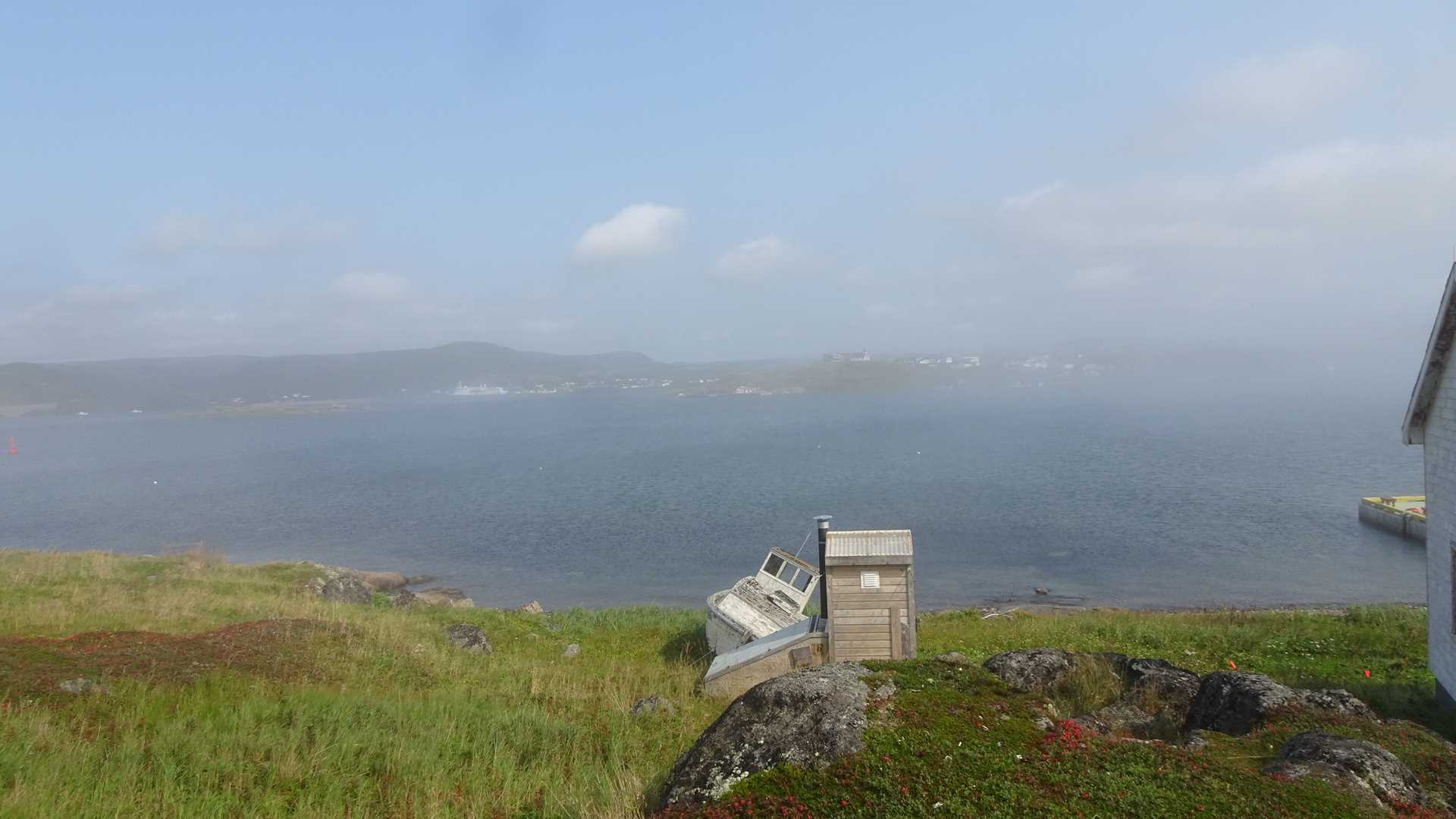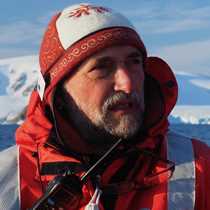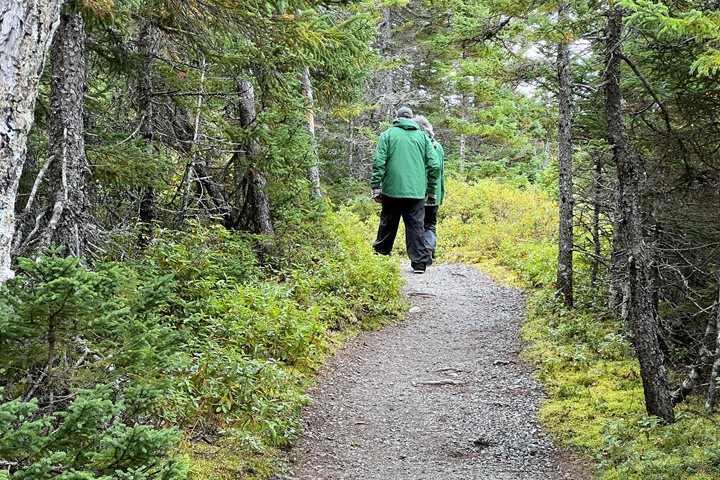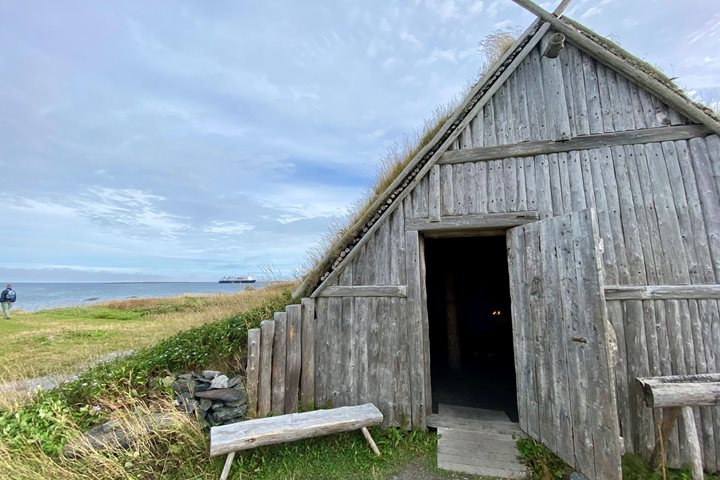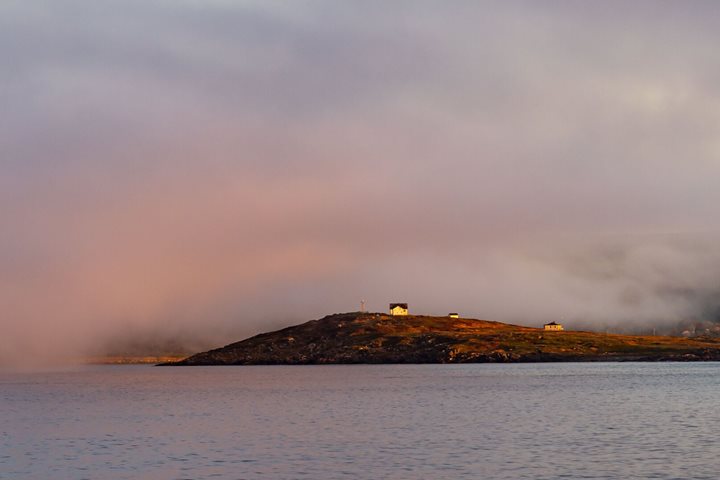Our first impression when we awoke was quite gloomy as the ship was surrounded by dense fog. On the outer deck, tiny droplets of water were felt on the skin. The temperature was noticeably colder than other days, and in combination with 10 to 20 knots wind, it felt rather uncomfortable. However, as morning progressed, the fog lifted, and patches of blue appeared in the sky. Finally, we spotted a small, hilly, and picturesque village surrounded by red cliffs near the coastline.
Red Bay was the morning’s destination. This fishing village in Labrador is notable as one of the most precious underwater archaeological sites in the Americas. Between 1530 and the early 17th century, it was a major Basque whaling area. There are several sunken whaling ships, both large galleons and small chalupas, and their discovery led to the 2013 designation of Red Bay as a UNESCO World Heritage site.
Several activities awaited guests on the shore. One museum displayed an excavated chalupa, a whale hunting boat that has survived almost intact for 500 years in this cold climate. Another museum displayed multiple artefacts related to the Basques’ presence in Labrador, including parts of shipwrecks, cloth, and tools found on land and underwater. The name of one of the sunken vessels is San Juan, and it sank near Saddle Island, very close to Red Bay.
Afternoon activities included two walking tours. The first walk was a hike to the top of nearby Tracey Hill, where guests enjoyed a breathtaking view in all directions. This hiking trail climbed above the forest line to the alpine tundra belt. The second walk on the Boney Shore Walking Trail crossed patches of boreal forest and coastal meadows to a few large and very old, fractured whale skulls among the shore boulders. The whale bones were hardly distinguishable among the granite boulders, as all of them were densely covered with lichens.
During recap, guests had an opportunity to watch a short (sixteen minute) video by Parks Canada called Completing the Circle about the discovery of the Vikings travel to Newfoundland a thousand years ago. It prepared guests for exploring L’Anse aux Meadows tomorrow.

